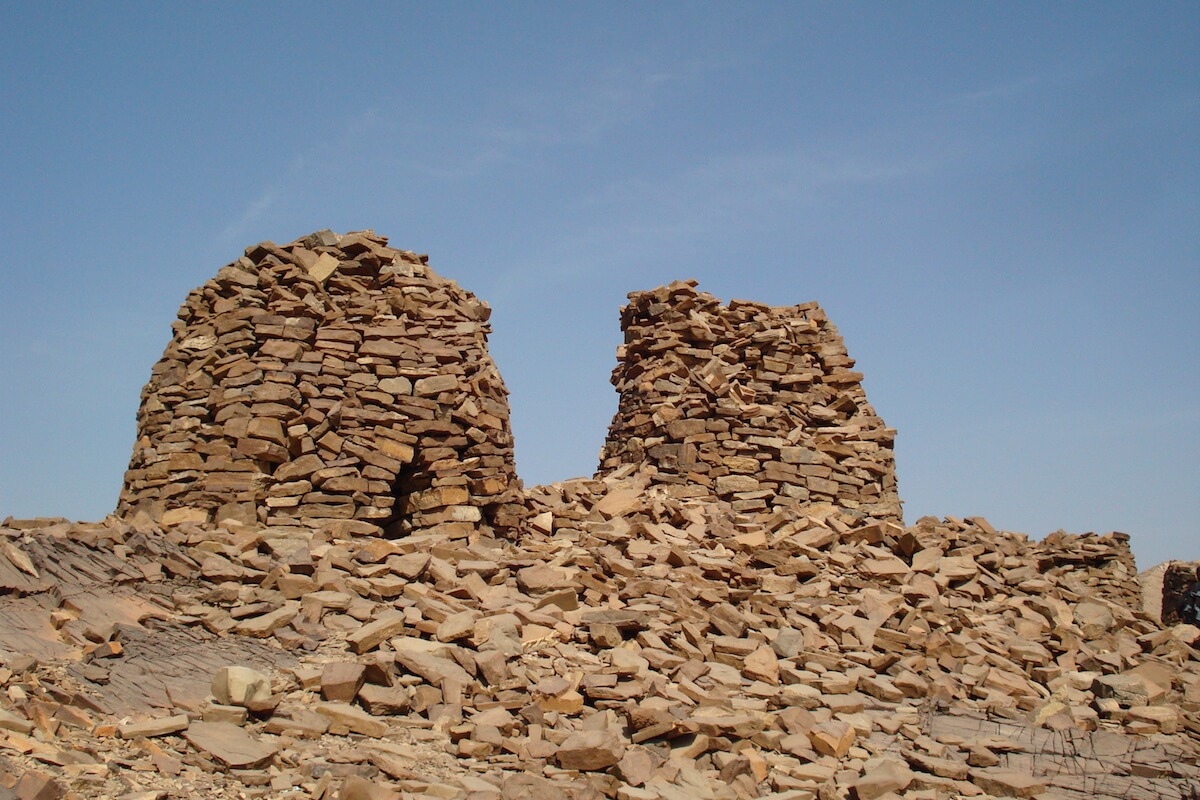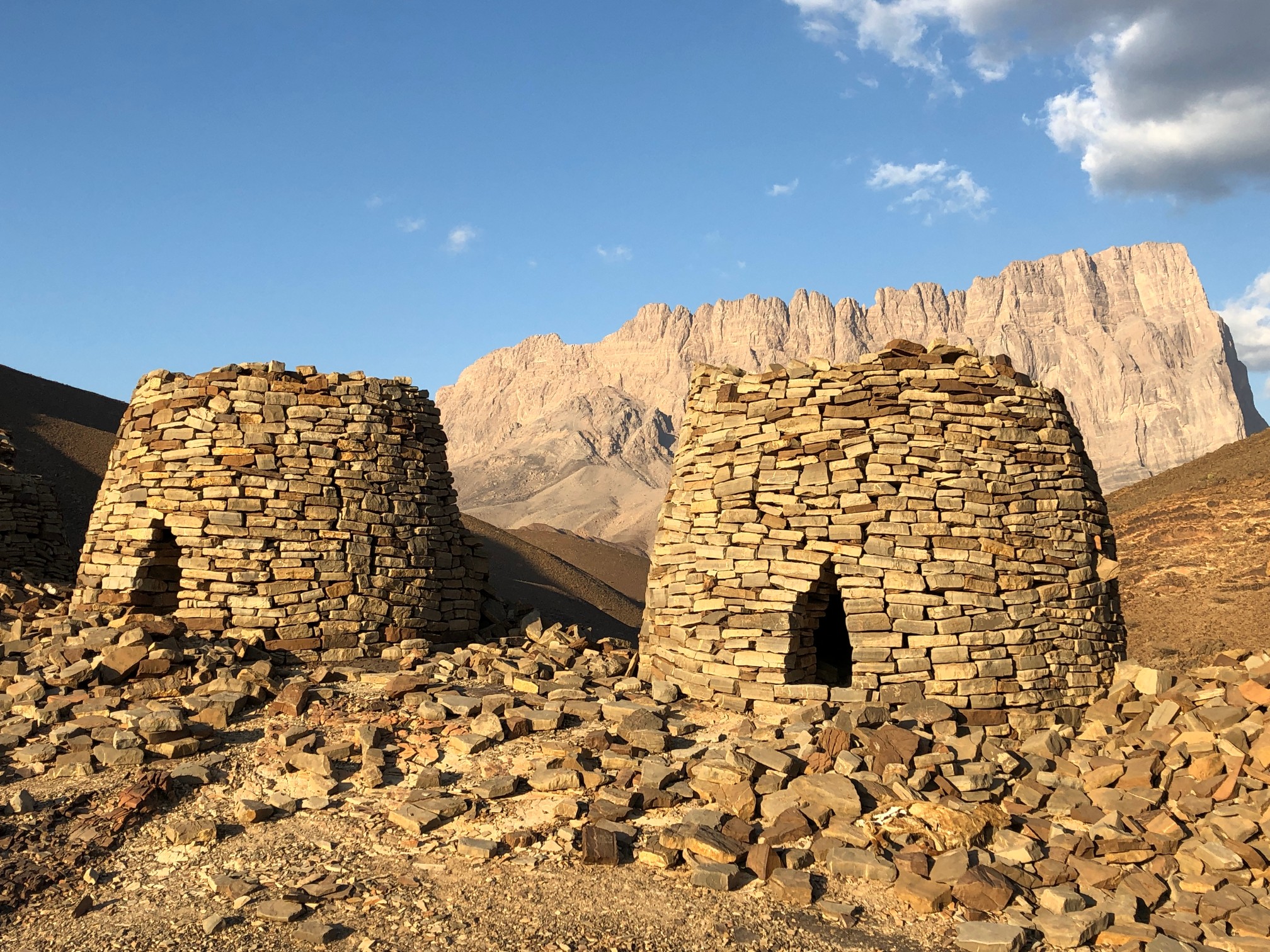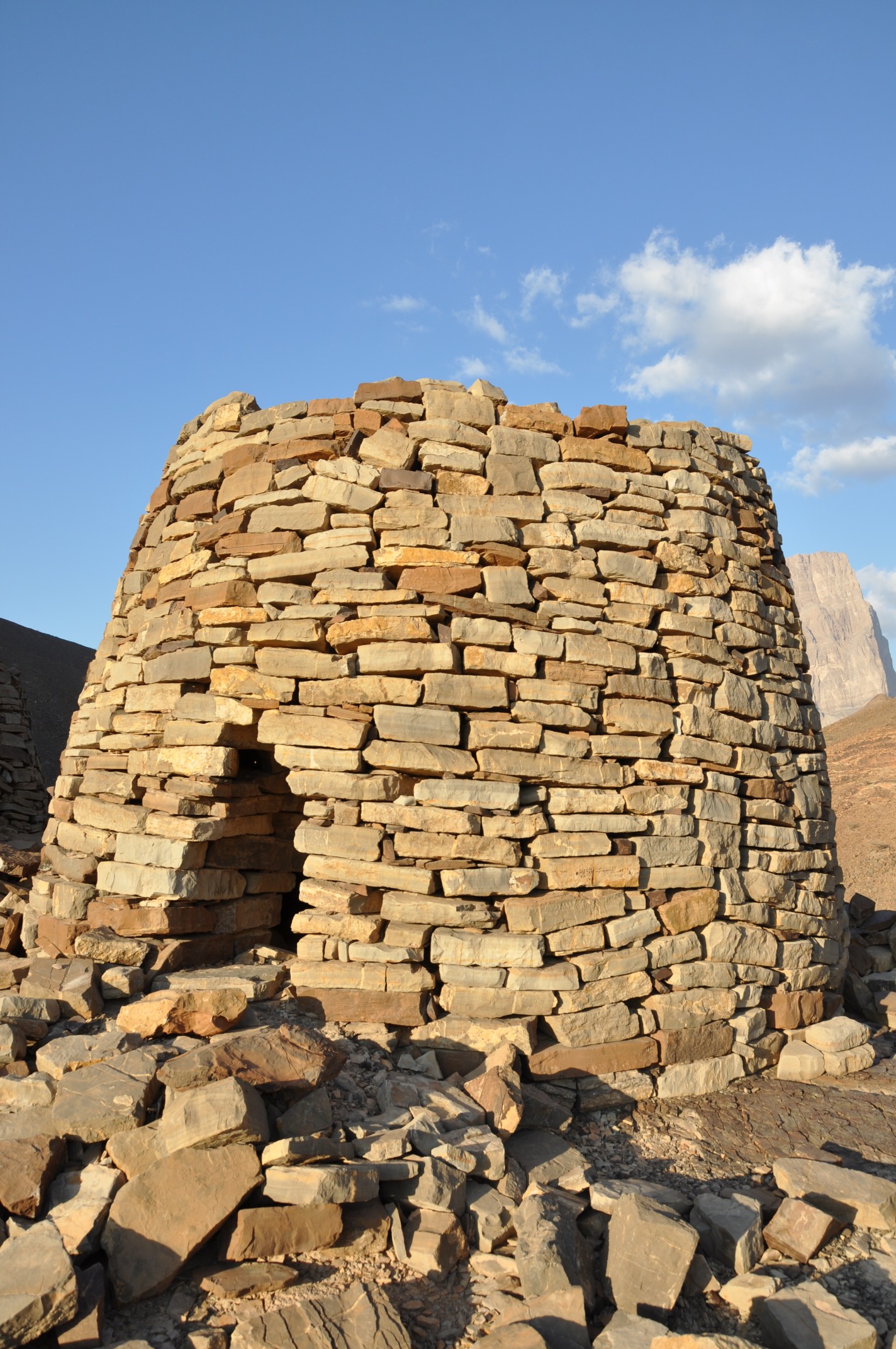The Arabian Peninsula is home to a fascinating array of ancient archaeological wonders, and among the most intriguing are the mysterious beehive-shaped structures scattered across the rugged landscape of Oman. These captivating monuments, known as the “beehive tombs” of Bat and Al Ayn, have long captured the imagination of historians and archaeologists alike. However, despite their designation as tombs, a puzzling reality remains – no human or animal remains have ever been recovered from these impressive structures. This raises a fundamental question: if these are indeed funerary monuments, where are the bodies?
The Beehive Tombs of Oman

Lined up dramatically atop rocky ridges, the beehive-shaped “tombs” of Bat and Al Ayn are two of Oman’s most celebrated prehistoric sites. These stone structures, dating back to between 3,500 and 2,000 BC, form one of the largest proto-historic necropolises in the world. The monuments are composed of stacked local flat stones and are arranged in three main clusters: Bat, Al Ayn, and Al Khutm.
The best-preserved examples are located in Al Ayn, where 21 beehive structures are dramatically lined up along the mountain range, set against the impressive backdrop of the Jabal al Misht, or “Comb Mountain.” In 2019, an additional 45 beehive tombs were identified in the Al Sharqiyah region, along with an Iron Age settlement and a copper mine, further expanding the known extent of this enigmatic site.
The Presumed Funerary Function

Despite the lack of any burial remains, the beehive structures of Oman have long been assumed to be funerary monuments. This conclusion is largely based on the fact that they date back to a period when the Arabian Peninsula supported a flourishing civilization, and the structures’ resemblance to other known tombs in the region, such as the circular tower tombs of Hili.
The Hili Grand Tomb, located near the Al Ayn beehive monuments, is a prime example of these circular tower tombs. This large, reconstructed collective tomb, measuring 12 meters in diameter and 4 meters high, has two entrances decorated with human and animal reliefs. Within the Hili tombs, archaeologists have recovered hundreds of human remains, as well as various objects and personal items, providing clear evidence of their funerary function.
The Missing Remains

However, the beehive tombs of Oman present a puzzling contrast. Despite their designation as tombs, not a single human or animal bone has been recovered from the hundreds of beehive-shaped monuments scattered across the landscape. This glaring absence of burial remains calls into question the presumed funerary function of these structures.
The lack of physical evidence has led some archaeologists to question the validity of the “tomb” label and to suggest that the beehive structures may have served a different, yet unknown, purpose. Some have proposed that they may have been used for religious or ceremonial activities, or even as storage facilities or dwellings.
The Shortfalls of Archaeology

The case of the Omani beehive tombs highlights one of the greatest challenges in the field of archaeology – the tendency to impose pre-conceived ideas upon phenomena that cannot be fully understood through a modern-day perspective. When faced with structures that do not fit neatly into our existing classifications, archaeologists often default to the most obvious explanation, even in the absence of supporting evidence.
This is a pitfall that the field of archaeology must continually strive to overcome. By maintaining an open and inquisitive mindset, and resisting the temptation to draw definitive conclusions without solid evidence, archaeologists can uncover the true nature and purpose of these enigmatic structures, and potentially shed new light on the rich history of the Arabian Peninsula.
The beehive tombs of Oman remain one of the most intriguing and enigmatic archaeological sites in the region. Despite their designation as funerary monuments, the absence of any burial remains within these structures raises fundamental questions about their true purpose. As the field of archaeology continues to grapple with this mystery, it serves as a reminder of the importance of maintaining a critical and open-minded approach to the study of the past. Only by resisting the urge to impose preconceived notions and embracing the unknown can we hope to uncover the true significance of these captivating ancient structures and the civilizations that created them.
